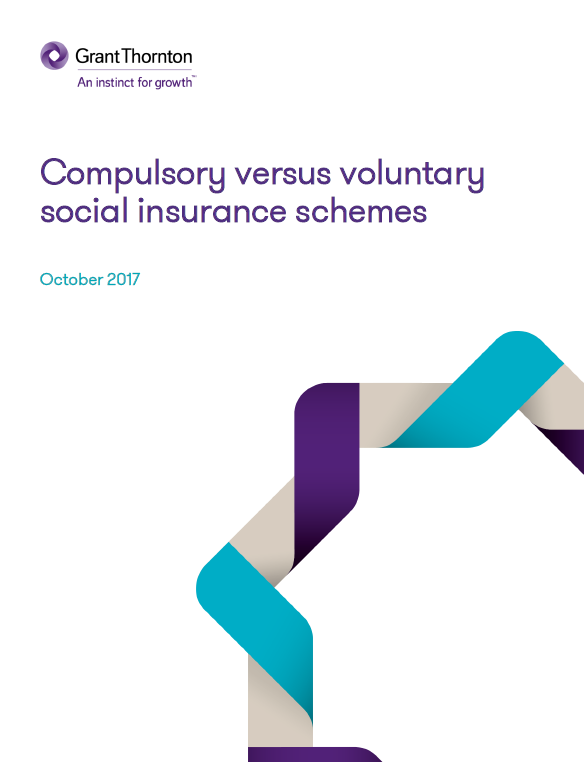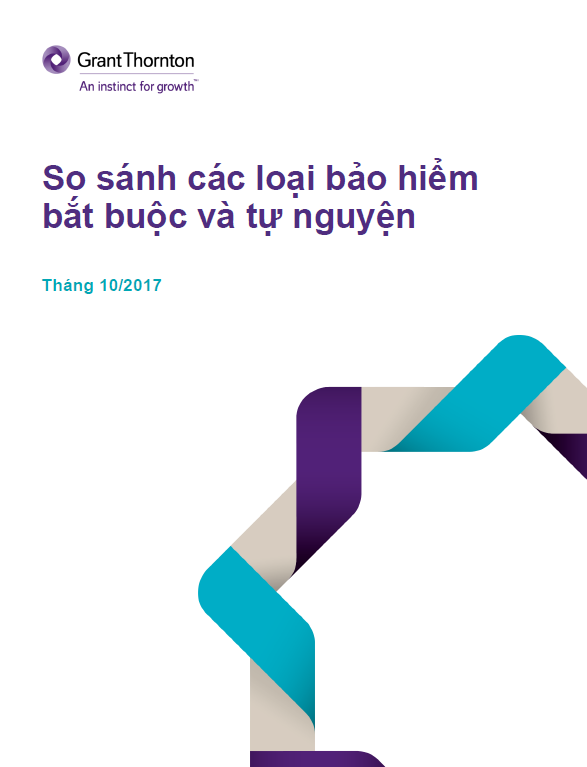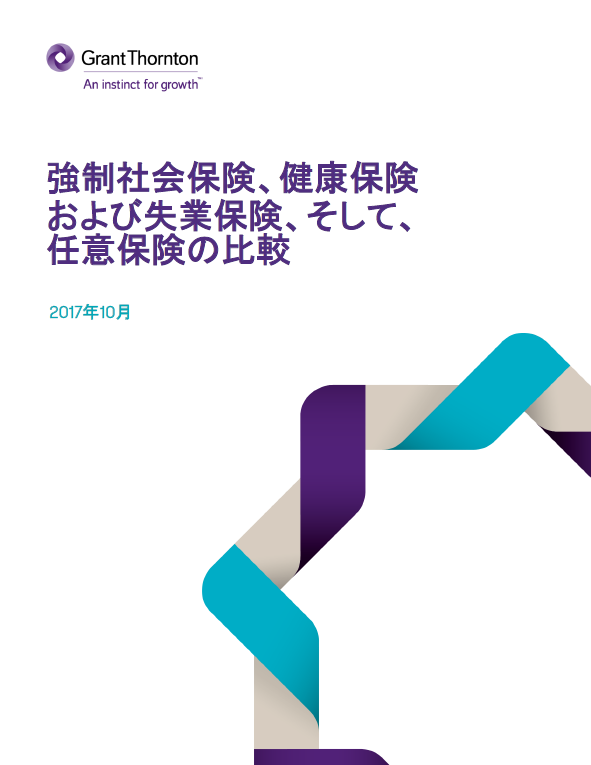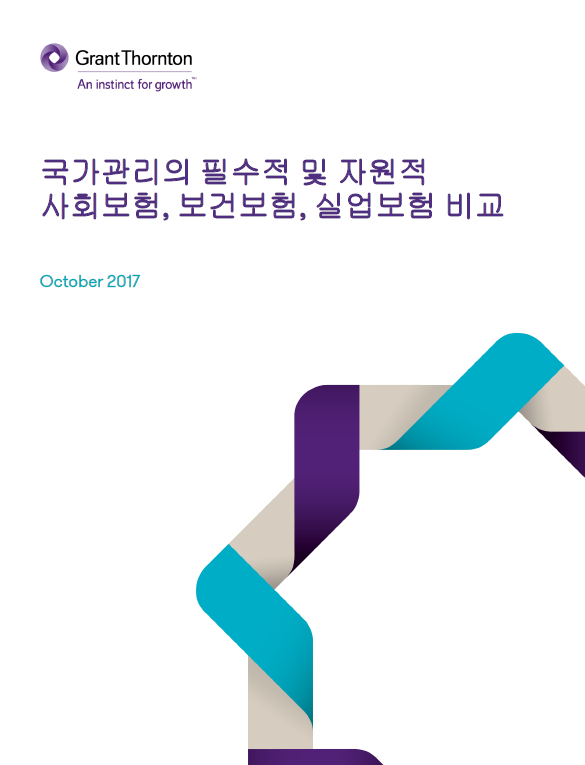-
International Financial Reporting Advisory Services
IFRS reporting advisory serivces of Grant Thornton are carried out by our dedicated team with expertise in IFRS implementation.
-
Audit Services
• Statutory audit • Review of financial statements and financial information • Agreed-upon procedures • FRAS services • Compilation of financial information • Reporting accountant • Cross-border audit • US GAAP audit
-
Audit Quality
We have various methods of monitoring our system of quality control and engagement quality, including real-time involvement of coaches and national office personnel on select audit engagements, reviews of issuer audit engagements prior to archiving by someone outside of the engagement team, and internal inspections of assurance engagements and the system of quality control.
-
Audit Approach
Audit Approach
-
Licensing services
Licensing services
-
International tax planning
Our extensive international network provides us with significant resources to meet all your expansion goals. We strive to develop commercially focused and tailored tax strategies to minimise tax exposures and maximise business efficiency.
-
Expatriate tax planning
We have a broad knowledge base and skills to assist you keep your personal income taxes to a legitimate and reasonable level, while remaining compliant with legislation. We can develop a personalised package for each key employee to take maximum advantage of the exemptions and incentives available.
-
Tax advisory
We will review the proposed business model and transactions and advise on tax implications and recommendations to optimize the tax opportunities under the local regulations and treaties which Vietnam entered into. Furthermore, we coordinate with our GT global tax team to provide a comprehensive tax advisory for the countries involved in the business model and transactions.
-
Tax compliance services
This service is designed to assist enterprises to cope with the statutory tax declaration requirements in line with the Vietnamese tax laws as well as the frequent changes and updates in tax laws.
-
Tax health check
Our Tax Health Check involves a high-level review of specific tax areas to highlight the key issues that need to be rectified in order to reduce tax risks. Through our extensive experience, we have identified key risk areas in which many enterprises are not fully compliant or often overlook potential tax planning opportunities. Our tax health check service represents a cost-effective method to proactively manage risks and reduce potential issues arising as a result of a tax inspection.
-
Transfer Pricing
Transfer pricing is a pervasive tax issue among multinational companies. In Vietnam, the tax authorities require special documentation to report related party transactions. Compliance with transfer pricing regulations is an important aspect of doing business effectively in Vietnam as failure to do so may result in significant penalties.
-
Tax due diligence
We conduct tax due diligence reviews of target companies to analyse their tax exposure and position in relation to acquisitions, mergers or consolidations. We are able to integrate this service with our Advisory Services department in order to offer a comprehensive, holistic due diligence review.
-
Customs and international trade
Our experienced professionals can help you manage customs issues more effectively through valuation planning and making use of available free trade agreements. We also assist Clients in optimising their customs procedures by making use of potential duty exemptions and efficient import-export structures. Risk mitigation activities include customs audit defense and compliance reviews.
-
M&A Transaction
We advise numerous foreign investors on efficient tax structures for their investments. Our experience allows you to consider all the options and set up a corporate structure that meets both operational and tax efficiency requirements. In short, the structure that is best for you.
-
Industrial Zones – Picking A Location For Your Business
Grant Thornton Vietnam’s one-stop services are designed to provide comprehensive support to both new and current investors who are planning to expand or restructure their business in Vietnam. Our professionals have established strong working relationships with landlords, property developers and authorities at various localities. With extensive experiences in liaison with the relevant agencies, we offer assistance including negotiation on land rental rates and efficient management of licensing process. Our customized and flexible solutions can bring benefits of cost efficient location, accelerate licensing process, and optimize tax opportunities while remaining in compliance with legislation.
-
Tax Audit Support
Tax audit support services provide comprehensive assistance to your business in Vietnam. Recent tax practices have shown the general tendency of launching routine tax audit on yearly basis. Tax authorities have been effectively using more sophisticated methods to identify target entities from across different industry sectors.
-
Business Risk Services
Business Risk Services
-
Transaction Advisory Services
Transaction Advisory Services
-
Valuation
Valuation
-
Business consulting services
Finance Management Advisory
-
Accounting services
Accounting services
-
Taxes compliance within outsourcing
Taxes compliance within outsourcing
-
Payroll, personal income tax and labor compliance
Payroll, personal income tax and labor compliance
-
Secondments/Loan staff services
Secondments/Loan staff services
-
Compilation of the financial and non-financial information
Compilation of the financial and non-financial information
-
Accounting systems review and improvement
Accounting systems review and improvement
-
Initial setting-up for accounting and taxes systems
Initial setting-up for accounting and taxes systems
-
Management accounting and analysis
Management accounting and analysis
-
Comprehensive ERP system solution
ERP software is a tool for business operations, production management, order processing and inventory in the business process. Today, ERP software for small and medium businesses has been greatly improved to help businesses manage their business better. The article below will answer all relevant information about what ERP software is and offer the most suitable ERP solution for businesses. Let's follow along!
-
Analyze Business Administration data
We believe in the value that data can bring to the success and development of every business. Our team helps design data architecture supported by tools, to support business governance and provide useful information to management.
-
Financial reporting compliance solution package
Putting financial issues at the heart, this service helps ensure that financial reports for customers comply with both the requirements of Vietnamese accounting regulations and standards (VAS) as well as reporting standards. international finance (IFRS).
-
Third-party ERP extensions
ERP is a long-term solution that requires long-term travel, not short-term. We understand that many businesses cannot deploy the entire ERP system at once due to many different reasons, instead businesses can deploy each part. Over time, these solutions can be expanded to accommodate improved business processes or can even link completely new processes across different departments.
-
Localize, deploy and rebuild the project
Quite a few ERP projects need to be implemented according to current Vietnamese requirements and regulations, but still comply with common international business requirements. These projects need some improvements and adjustments in the right direction.
-
Consulting on technology solutions
We support the selection and implementation of the most suitable solutions, ensuring business efficiency and performance. We will work closely with customers to plan, evaluate and implement the right technology investment strategies and solutions to meet the development needs of businesses.

-
Offshore company establishment service
Using the offshore company model will facilitate the owner in the process of transaction and expand overseas markets, take advantage of the tax policy with many incentives and protect the value of the family enterprise's assets.
-
Private Trust Advisory
The development of the economy with many modern financial instruments has brought many advantages and opportunities for the enterprises, but there are still certain potential risks in any type of business. So how to protect your asset value with an appropriate company structure while stay compliance with relevant regulations?
-
Our values
We have six CLEARR values that underpin our culture and are embedded in everything we do.
-
Learning & development
At Grant Thornton we believe learning and development opportunities help to unlock your potential for growth, allowing you to be at your best every day. And when you are at your best, we are the best at serving our clients
-
Global talent mobility
One of the biggest attractions of a career with Grant Thornton is the opportunity to work on cross-border projects all over the world.
-
Diversity
Diversity helps us meet the demands of a changing world. We value the fact that our people come from all walks of life and that this diversity of experience and perspective makes our organisation stronger as a result.
-
Contact us
Contact us
-
Available positions
Experienced hires
-
Available positions
Available positions
Overview of the Social Insurance system in Vietnam
The Insurance policy administered by Social Insurance authorities is a major policy of the Communist Party and the State, which promotes the stable lives for employees, political stability, social security.
The primary purpose of Social Insurance (“SI”) is to ensure the possibility of compensation for a portion of either lost or reduced laborer's income due to sickness, maternity, occupational accidents and occupational diseases, disability, unemployment, old agey, and death. The basis for this is a financial fund administered by the State in accordance with the law.
Social Insurance in Vietnam is organized and managed from a top down approach and from central to local levels, including:
1. Central level is the Vietnamese Social Insurance.
2. For centrally-controlled cities and provinces, the managing authorities are the Social Insurance authorities of the provinces and cities under the Vietnamese Social Insurance.
3. For the rural districts, urban districts, wards, cities controlled by their provinces, the managing authorities are the Social Insurance authorities of rural districts, urban districts, wards and cities controlled by the provincial Social Insurance authorities.
SI has been implemented in Vietnam since 1945 and has undergone many amendments. On 24 January 2002, the Government issued Decision No. 20/2002 / QD-TTg to transfer the Health Insurance (“HI”) system controlled by the Ministry of Health to the Vietnamese Social Insurance Authorities. From 1 January 2009, Unemployment Insurance (“UI”) policy has been effective and managed by Vietnamese Social Insurance Authorities.
In this regard, apart from the compulsory insurances comprising SI, HI, and UI, the Government has also implemented a voluntary SI scheme and voluntary household HI for those who are not required to contribute compulsory insurances but who would still like to benefit from such insurance scheme.
According to statistics from the Insurance Authorities, at the end of June 2017, the total number of people contributing to SI, HI, and UI in Vietnam were recorded at 78.029 million, an increase by 2.6% compared to the figures recorded in June 2016. Among them, 13.083 million people contributing to compulsory SI, 11.277 million people contributing to UI, the number of people participating to voluntary SI were 215 thousand and the figure of HI were 77.814 million, and in total, they accounted for 83 4% of the population. Regarding to voluntary SI and household HI, the growth in participation has been increasing due to the benefits claim. Specifically, from 1 June 2017, the health sector has officially applied new hospital fees for more than 1.900 services for those who do not have HI Card; accordingly, household HI is one of the optimized options to minimize their financial burden.
With respect to the above, Grant Thornton Vietnam would like to provide the comparison between the compulsory and voluntary SI, HI, UI under the State’s management with the following specific criteria:
1. COMPARISION BETWEEN COMPULSORY AND VOLUNTARY SOCIAL INSURANCE.
|
Items |
Compulsory Social Insurance |
Voluntary Social Insurance |
|
a) Benefit from participating in Social Insurance |
- Sickness scheme People who are eligible for sickness insurance in accordance with the State's regulations shall be able to claim sickness benefits depending on their condition, including short – term sick leave, or long- term sick leave for treatment, taking care of their sick children younger than seven years old, as well as for recuperation. Apart from being entitled to take leave for treatment and recuperation, the participants are also subjected to SI allowance of 50-100% of their latest month salary before the sick leave period. - Maternity scheme People who are entitled to maternity allowance will be able to take leave and receive allowance for prenatal care, miscarriage, abortion, fetal suicide, stillbirth or termination of pregnancy, contraception and giving birth. Female employees have the rights to take 6 months maternity leave either before or after giving birth. In cases of giving birth to twins or more, they are entitled an additional 1 month leave for each additional child, as well as maternity allowance of 100% of the average of salary/wages in the six months preceding the leave. Male employees contributing to SI and having a wife on maternity leave shall be entitled to take leave leave from 5 to 14 working days as well as the allowance equivalent to {(the average salary contributing to SI for six months preceding the leave) /24 days}x number of leave days. - Work-related accidents – Occupational diseases Employees suffering from a work-related accident or an occupational disease which meets the relevant conditions shall be entitled to: o A lump-sum allowance for reduction in working capacity from 5% to 30%, or o A monthly allowance for reduction in working capacity of 31% or more, or o An attendance allowance is provided to those suffering from reduction in working capacity of at least 81% and rachioparalysis or blindness or amputation, paralysis of two limbs or mental illness, or o A lump-sum allowance for death due to a labor accident, an life supportaids, orthopedic devices for those who have impairment of bodily functions. In addition, after taking leave has not fully recovered within the first 30 days of returning to work, they can takean additional 5 to 10 days of leave, and receive 25% of base salary per day for staying at home, or 40% of base salary per day if staying in health care centres. - Pension scheme A pension is granted to employees who satisfy conditions as stipulated by law; in which, monthly pension is calculated by the percentage of pension claim (from 45% to 75%) multiplied by the average salary contributing to SI. - A lump-su eligible for a pension but have contributed to SI for less than 20 years; OR, do not contribute to SI after 1 year after leaving work and would like to claim r a lump-sum allowance whereas their SI contribution period is less than 20 years; OR, are suffering from one of the life-threatening illness; OR going abroad for settlement, have the o apply to claim lump-sum allowance. The lump-sum allowance will be granted depending on years of SI contribution. For each year of contribution, the allowance shall be: o Equivalent to 1.5 months of the average monthly salary for SI contribution period before 2014; o Equivalent to 2 months average monthly salaryfor SI contribution period from 2014 onwards; - Mortality scheme: Upon meeting certain requirements under the mortality scheme in accordance with the laws, an allowance equivalent to ten times the standard minimum salary will be paid by the social security fund to cover the cost of the funeral. In addition, a survivors allowance will be given to the family or relatives of employees on a monthly basis or by way of a lump sum. |
- Pension scheme Eligible persons are entitled to a pension allowance as follows: o Monthly pension = Pension rate (45% for the first 15 years + 2% for Male and 3% for Female in each following year) x Average base salary contributed to SI. (the maximum rate is 75%) o Pensions are adjusted based on the cost of living on each period, according to the State’s announcement. o During the retirement period, apart from monthly pension, the voluntary SI participants will also receive a lump-sum allowance. The allowance is calculated from the 26th year contribution to SI (for females) and the 31st year (for males). Accordingly, they are entitled to 0.5 month of average income contributing social insurance for each year. - A lump-sum social insurance allowance Participants will enjoy a lump-sum social insurance allowance as follows: o Equivalent to 1.5 months of the average monthly base salary for SI contribution period before 2014; o Equivalent to 2 months average monthly base salaryfor SI contribution period from 2014 onwards; In the event the contribution period is less than 1 year, such allowance is equal to the contributed amount, and the maximum amount shall be the average monthly base salaryfor SI contribution is 2 months.
- Mortality scheme The benefits for voluntary SI participants shall be as follows: o Upon death of participants during the contribution of the voluntary SI for a full 5 years or receiving a pension (or are declared dead by the Court), their family and or relatives will receive the funeral allowance (equivalent to ten times of the standard minimum salary) o Upon death of the participants who are contributing to voluntary SI or are receiving a pension, their family members will receive weekly allowance or monthly allowance depending on specific cases.
|
|
b) Subjects to contribute SI |
Group 1: Laborers who are Vietnamese citizens - Employees working under indefinite/definite duration labor contracts, seasonal labour contracts, or for specific jobs from 3 months to under 12 months, including those with labor contracts signed between an enterprise and the legal representative of employees who are under 15 years old in accordance with the laws, - Employees having labor contracts with the duration from 1 month to less than 3 months (effective from 1 January 2018), - Others, such as cadres, civil servants, office workers, enterprises managers, cooperatives, etc. Group 2: Foreign laborers working in Vietnam having work permits or practice certificates or practice licenses granted by Vietnamese Authorities (implemented from 1 January 2018). Group 3: Employers contributing to compulsory SI including: agencies, organizations and enterprises hiring and employing laborers according to the labor contracts. |
Participants of voluntary SI who are Vietnamese citizens from 15 years old or above, and those who are not eligible for compulsory SI.
|
|
c) Contribution rate |
The monthly SI contribution is 25.5% of the employee’s monthly salary, in which, the contribution rate is 7% and 17.5% for employees and employers, respectively (effective from 1 June 2017): - The SI, and HI contribution is 20 times of general minimum wage if the monthly salary for SI and HI contribution exceeds 20 times of general minimum wage. - The UI contribution is 20 of times regional minimum wage if the monthly salary for UI contribution exceeds 20 times of regional minimum wage. - The contributed salary paid for compulsory insurances must not be lower than the regional minimum wage. |
The monthly SI contribution is 22% of monthly income base chosen by the voluntary participants of SI: - The lowest income base is the standard rate of low income households of rural areas in accordance with the regulations of the Prime Minister, - The highest income base equals to 20 times of general minimum wage at the time of payment.
|
|
d) Payment method |
On a monthly basis, no later than the last day of the month, enterprises are required to pay SI, UI, HI contribution for the employees participating in compulsory SI, HI, UI; as well as to withhold from the employees’ monthly salary at the prescribed rate and remit to the bank account of the social insurance authorities opened at the State bank or Treasury. For other special cases, such as cooperatives, individual households, cooperative groups operating in the field of agriculture, forestry and fishery, etc. are allowed to contribute every 3 or 6 months. |
Participants of voluntary SI may choose one of the following payment methods: - On a monthly basis, - Every 03 months, - Every 06 months, - Every 12 months, - One-time payment for number of years but not exceeding 5 years per time. - One-time payment for the missing years of SI contributions for participants in voluntary SI who meet the minimum age criteria to receive their monthly pension, but the time of SI contribution is less than full 20 years in order to be eligible for pension. |
|
e) Contribution procedures |
Participants of compulsory SI must contribute through their employers. The employers are required to submit the dossier and receive the result electronically, by post, or directly to the social insurance authorities of Districts/ Wards or Provinces which is the place of business registration. Branches of enterprises will pay the SI insurance at the place where it’s Business License is issued. |
Participants of voluntary SI are required to register and carry out the relevant procedures at the SI agencies of Districts/ Wards where they are living; and make payment to the SI agencies in post offices in their Districts/ Wards. |
2. COMPARISION BETWEEN COMPULSORY HEALTH INSURANCE AND HOUSEHOLD HEALTH INSURANCE
|
Items |
Compulsory health insurance |
Household health insurance |
|
a) Benefits |
- 100% of the medical expenses can be claimed for those who are professional officers and non-commissioned officers and officers and non-commissioned officers specialized in technical areas, and who are serving in the people’s security force; children aged less than 6 years old. - 100% of the medical expenses can be claimed for cases where the total expense is lower than the level prescribed by the Government and conducted at commune hospitals; - 95% of the medical expenses can be claimed for those who are entitled to pension, monthly allowance for reduction in working capacity; receiving monthly social welfare allowance as prescribed by the law; poor household members; ethnic minority people living in areas with difficult or extreme difficult socio-economic conditions. - 80% of the medical expenses can be claimed for other individuals. In the event if an individual belongs to more than one category as mentioned above, he/she is eligible for the highest benefit for the insured category. |
|
|
b) Subjects and contribution rate |
- 4.5% of employee’s monthly salary, or salary according to their rank, labor contract, etc., in which employees contribute 1.5% and employers contribute 3% |
Groups of households participating in HI including household members except for the ones prescribed in Clauses 1, 2, 3 and 4 (in the left column) - The contribution of the first contributor is 4.5% of the base salary; - The contribution of the second, third, fourth contributor is 70%, 60%, 50% of the premiums of the first one respectively; - The contribution of the fifth contributor and above shall be equal to 40% of the premiums of the first one. |
- 4.5% of monthly salary, allowance and base salary from the SI fund |
||
- 4.5% of monthly salary, allowance and base salary which have been paid monthly by the State budget |
||
- 4.5% of base salary, in which participants contribute 3% and the state budget contributes 1.5% |
||
|
c) Contribution procedures |
Dossier: - The employees:
- For the employers:
The dossier is submitted directly to One-stop section of SI authority or online |
Dossier: A declaration form for voluntary HI applicable for each category of the voluntary participants (Form 01/BHYTTN), 01 copy of the family register. For the case of reduction of contribution levels, they have to submit 01 copy of HI cards of people who have already registered The dossier is submitted to the agency or SI authority |
|
d) Payment method |
- The employers are required to pay monthly HI contribution for the employees, and withhold the HI contribution from the employees’ salaries, and then transfer the total amount to the HI fund concurrently. - For agricultural, forestry, fishery and salt-making enterprises who do not pay monthly salaries, they are required to pay quarterly or biannually HI contribution for the employees, and withhold HI contribution from the employees’ salaries, and then remit to the HI fund concurrently. |
- For those who participate in HI for the first time, or who have discontinued the contribution for at least 3 months: From 25th day to the last day of month, HI card is valid for 30 days from the date that the agents pay to SI authorities. - For cases of extension, or interruption of less than 3 months: the period for contribution is from the 15th to the 20th day of the month when the HI card is expired, the HI card is valid from the beginning of the following month. - The representatives of the households, organizations and individuals shall periodically pay the quarterly, biannual or annual payments to the HI fund. |
|
e) Conditions |
- Present his/her valid HI card and identification card together with his/her photo. - In case of emergency, allowing to seek medical care services at any medical establishment and need to present his/her valid HI card together with identification papers together with photo before he/she is discharged from hospital. |
|
Recommendation
According to the current regulations, during their employment, the employees who are entitled to SI contributed by the employers are entitled to claim sickness allowance, maternity allowance, occupational accidents and diseases, pension, and mortality allowance; persons aged over 15 years but not belonging to the cases that SI is contributed by employers, would be allowed to participate to the voluntary SI in order to enjoy the benefits of pension and mortality allowance; therefore, choosing a suitable method to contribute SI will depend on various factors (i.e. age, status). If you require any further advice on an appropriate SI scheme, or SI compliance services, payroll or Personal Income Tax compliance services, please do not hesitate to contact us, Grant Thornton Vietnam.






